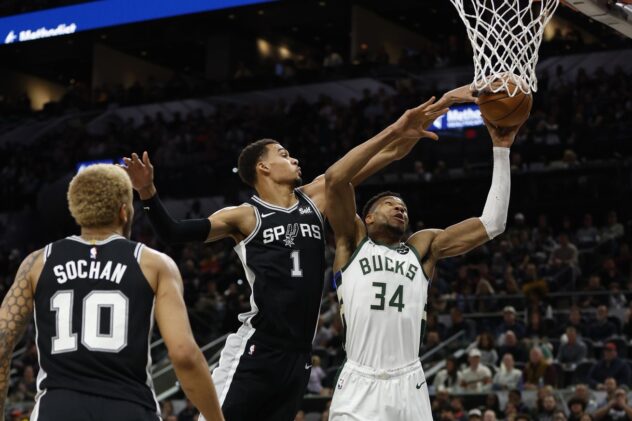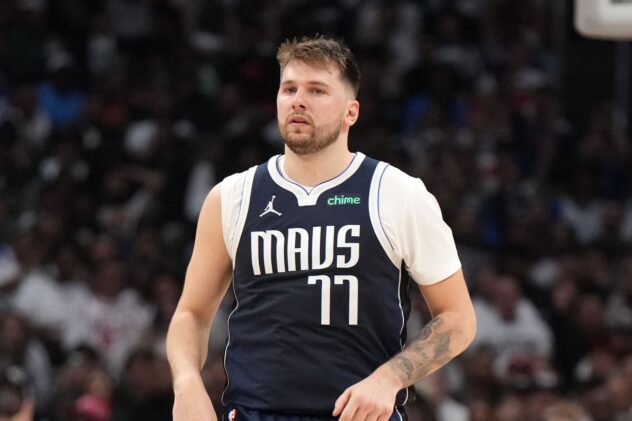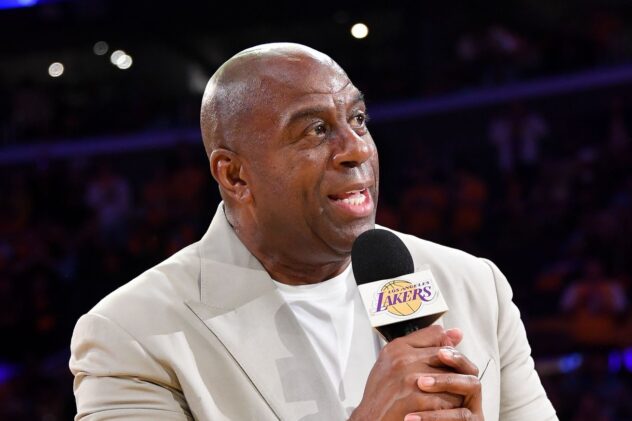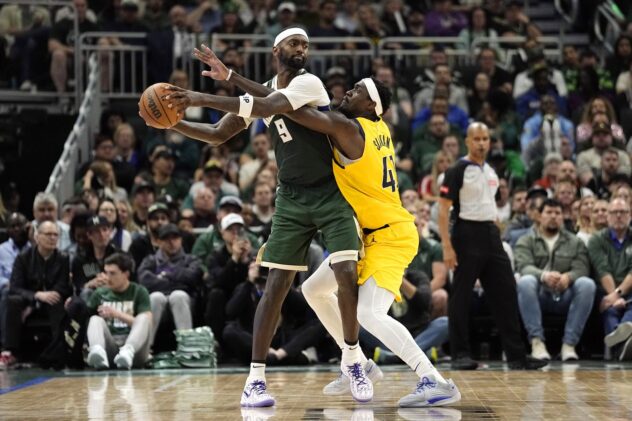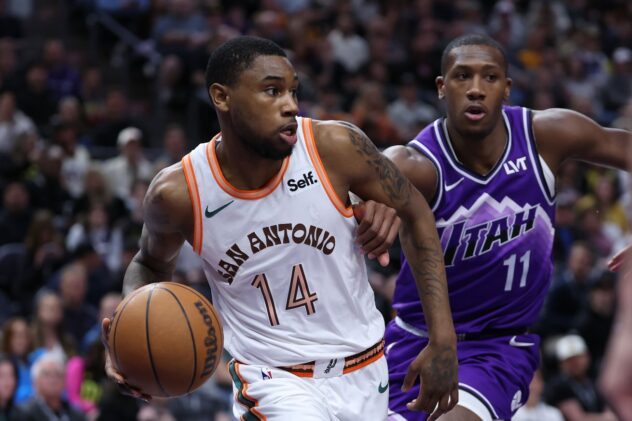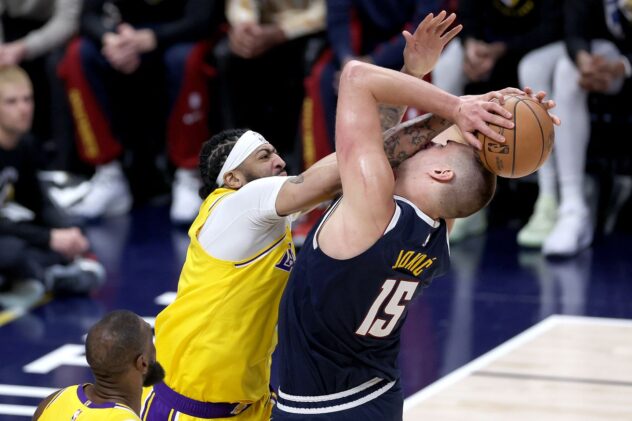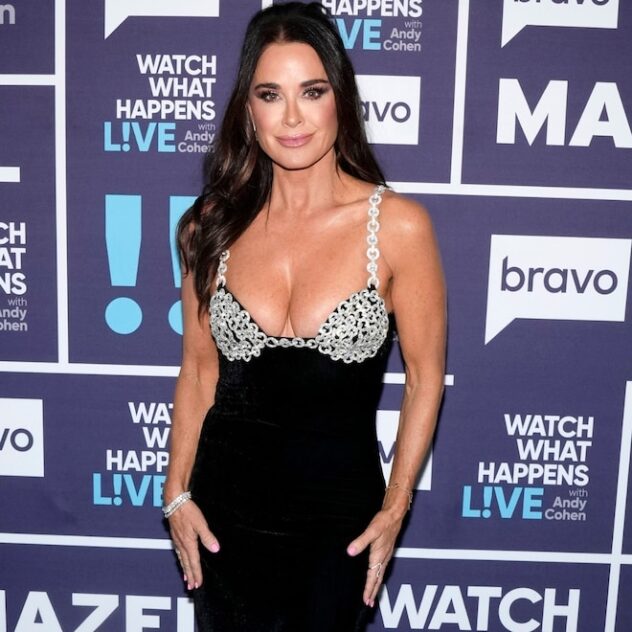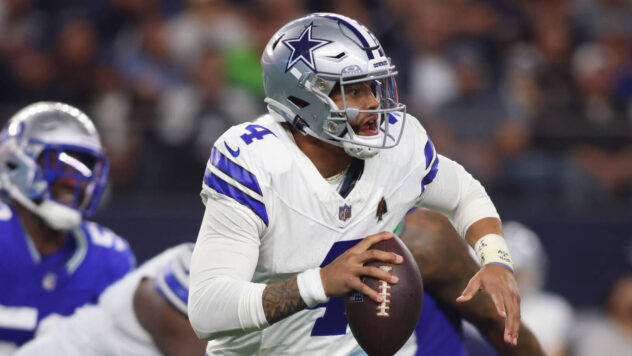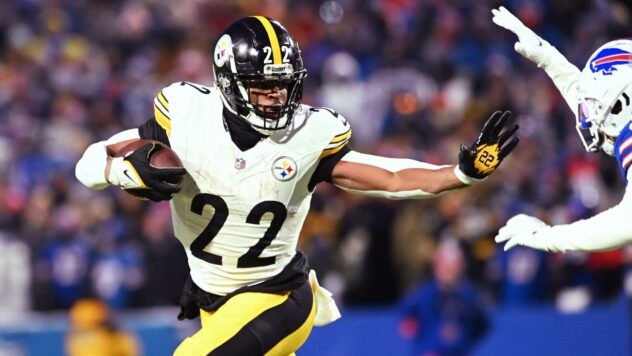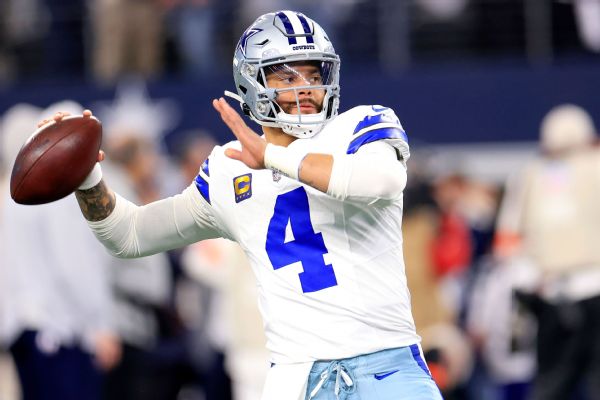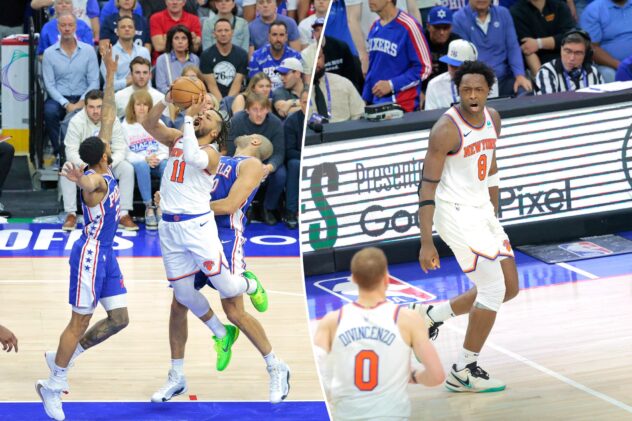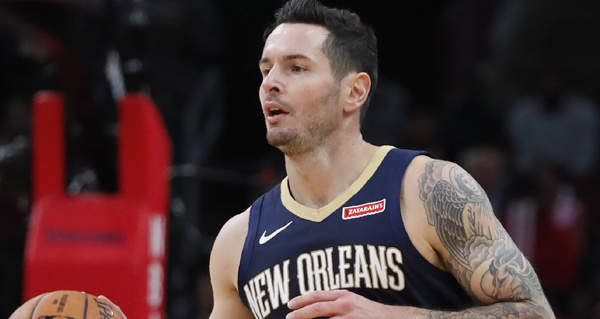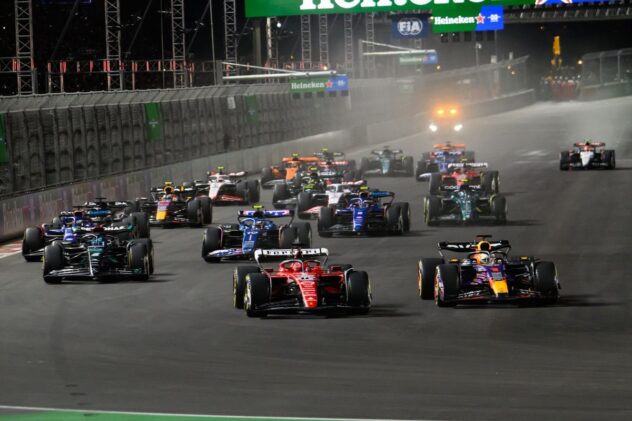Zach Collins has potential to be a 3-and-D center
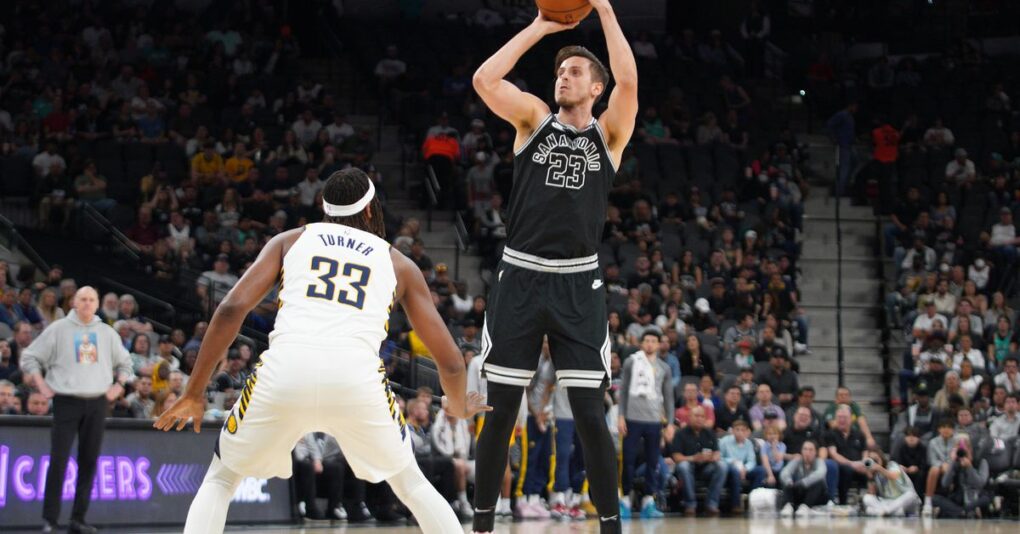
Zach Collins’ NBA journey has been one of resilience. Profiling as a stretch big-man out of Gonzaga, Collins was selected as a top-10 draft pick by the Portland Trail Blazers in 2017. He struggled to find significant minutes in his first 4 seasons, dealing with injuries throughout his time in Portland.
That led him to San Antonio, who took a chance on a player that looked to be headed out of the league when he missed the entire 2020-21 season due to injury. Now, a rebuild has thrust him into a starting center role for a team that lacks experienced NBA big men. Collins has answered the call, averaging 13.4 points, 7.8 rebounds and 3.6 assists on 40/35/87 shooting splits since taking the starting role just before the All-Star break, after the Jakob Poeltl trade.
Collins has brought the team spacing on the offensive end, frequently being used as a stretch big in the pick and pop, and has shown good defensive potential around the rim, all while showing quickness to get out and defend rangier big men. He was a major contributor in the team’s back-to-back wins against the Jazz and Pacers, and most of all, he’s shown flashes of being not just an overqualified backup five, but a legitimate starting center. He’s done it by being what every NBA team looks for in their team building process: A 3-and-D player.
The Offense
This part may seem a bit more obvious than his efforts on the other end of the floor. Collins provides some much needed spacing for a Spurs team that lacks shooters. He doesn’t have the gravity that other stretch bigs do, lacking the reputation of an elite shooter. But at 35% on two attempts per game, he’s just dangerous enough to make other teams pay if they sag off him.
Look at these plays from the Pacers game. Myles Turner is so concerned with picking up the ball handler in the pick and roll, or helping on a baseline drive from the top of the key, that he completely leaves Collins wide open for threes. This is undoubtedly part of the scouting report against the Spurs, as most of their key offensive players like Keldon Johnson and Jeremy Sochan make their money around the rim.
That’s not the only way he opens up the Spurs offense, though. Much like Poeltl, Collins is a talented passer. He routinely finds cutters in tight windows for layups. The Spurs run a lot of high post action with cutters, it’s essential that their bigs be able to pass the ball. Collins excels at this.
He has also done a solid job finishing inside, shooting 57% on twos this year. He’s not an elite finisher by any means, but his length allows him to get his shot off over smaller defenders in the paint. Ideally, he operates out of the high post and pick and pop, saving rolling responsibility for guys like Sochan and Charles Bassey. His offensive versatility has made him a weapon that fits well with this current group of Spurs.
The Defense
This has been the exciting part to watch. Collins has really evolved as a defender since taking over as a starter. While he will not blow anyone away with emphatic rejections at the basket or switching onto guards like Bam Adebayo, he is the kind of solid interior defender who won’t hurt his team defensively.
In the Jazz game, where the Silver and Black snapped their 16-game losing streak, Collins locked down the paint, as Utah scored just 36 points in the paint. For context, NBA teams typically score upwards of 50 in the paint in a usual game. Collins only had one block in that contest, but watch the tape and you’ll noticed that he routinely contested shots at the rim. They didn’t always result in a block, but he does an excellent job of walling up and altering drivers and opposing bigs. He is a good positional defender, and has shown great help side instincts finding the right spot to be in to contest without fouling. He combines that with a savvy ability to block shots, with a 41% block percentage (an estimated percentage of opponent two-point field goal attempts blocked by a player while he was on the floor.)
In their two wins, the Spurs looked like a completely different team on the defensive end of the floor. In fact, their best five-man lineup (Collins, Sochan, Johnson, Keita Bates-Diop and Malaki Branham,) has a defensive rating of of 95.6 in 41 minutes of play, the Cleveland Cavaliers have the best defensive rating in the NBA at 110.1. Collins appears in four of the five best lineups since the trade deadline while becoming a stabilizing force on the defensive end.
When you think of 3-and-D players, you probably think of the Mikal Bridges of the world: a wing who can shut down a perimeter player and nail spot up jumpers on the the other end. Collins isn’t that, but he does bring much needed versatility on offense and sound rim protection on defense. Most importantly, he’s shown how well this group fits around a big man who can hit from deep and control the paint on the other end… and you know who fits that description? The guy everyone wants at #1 overall: Victor Wembanyama.

